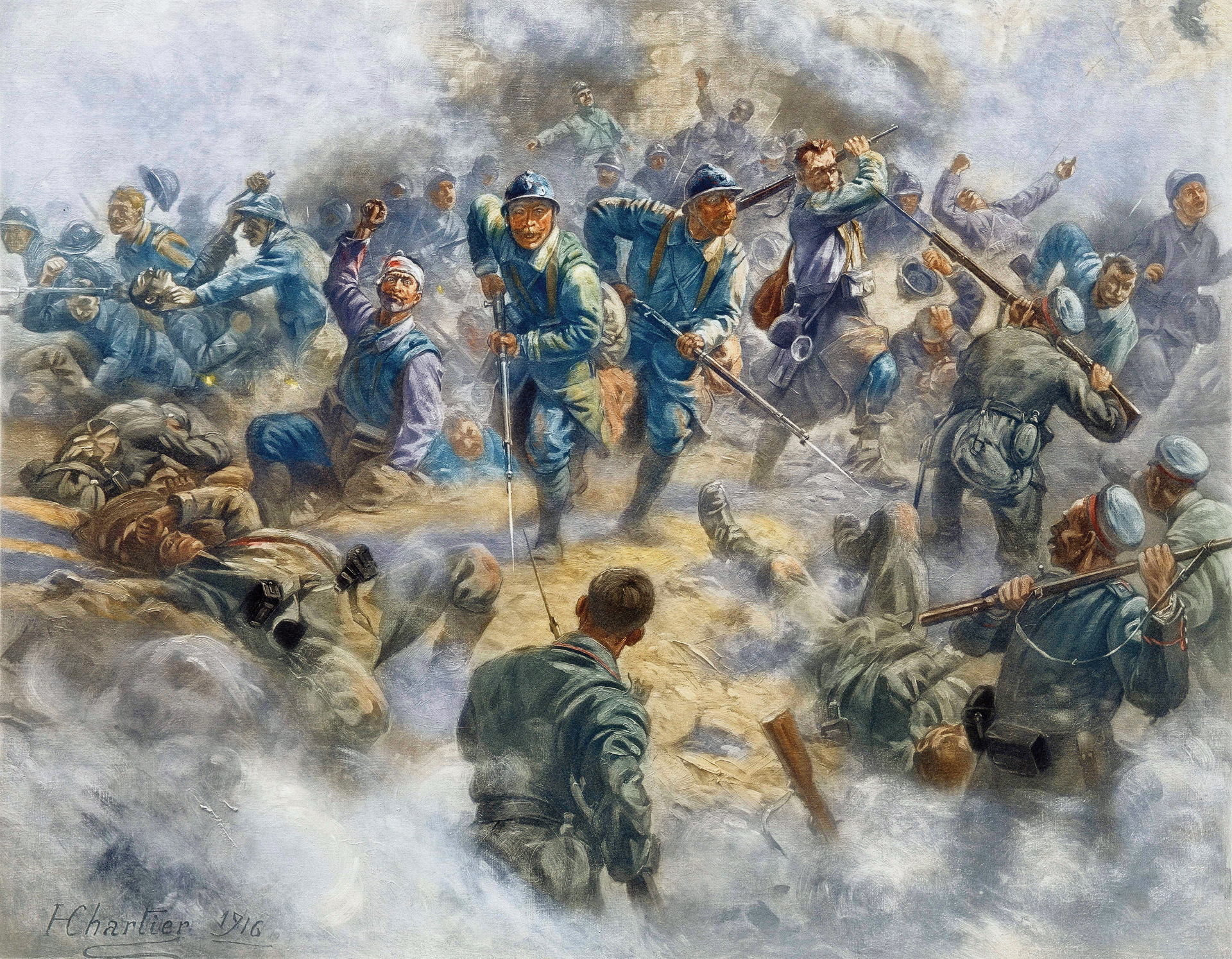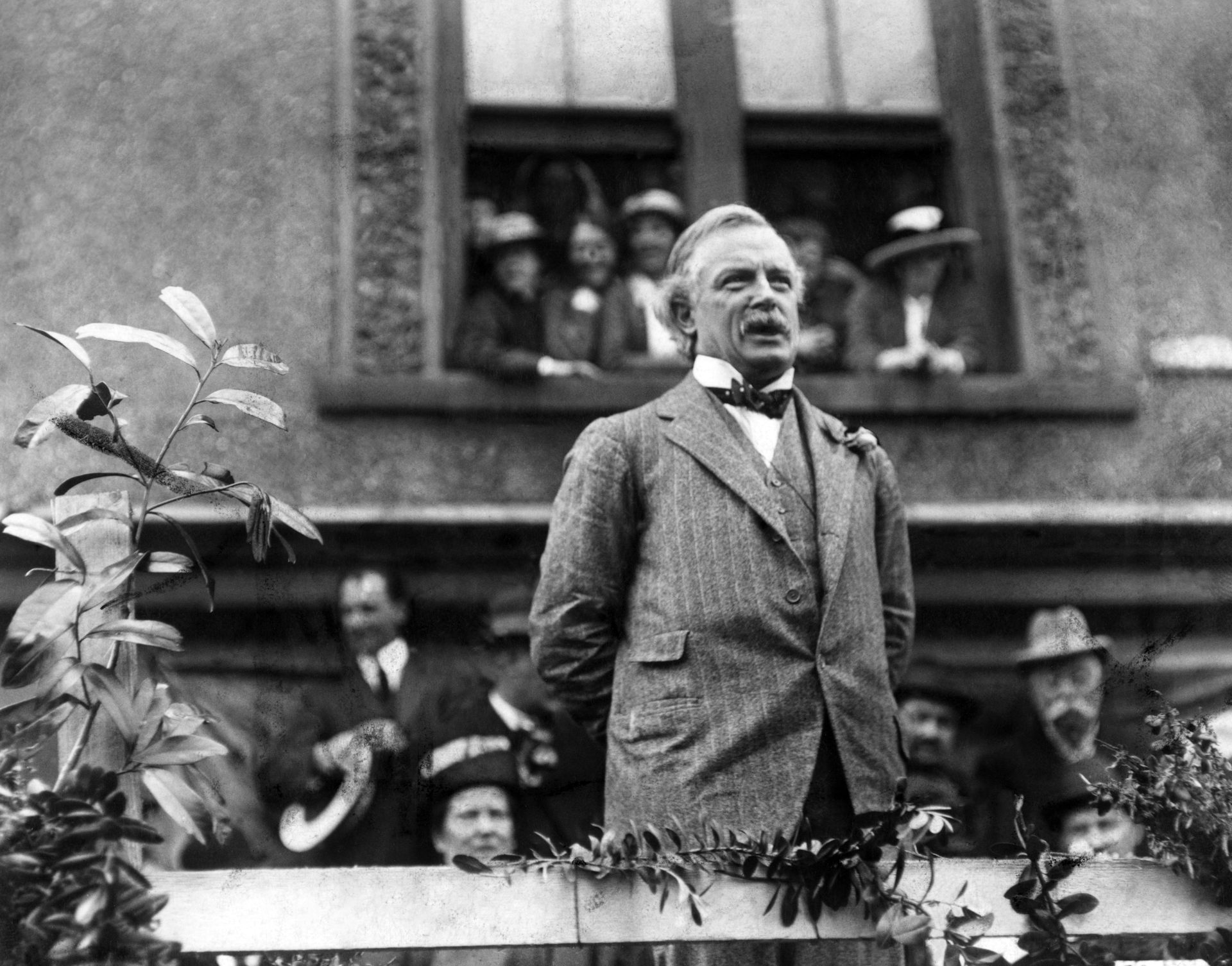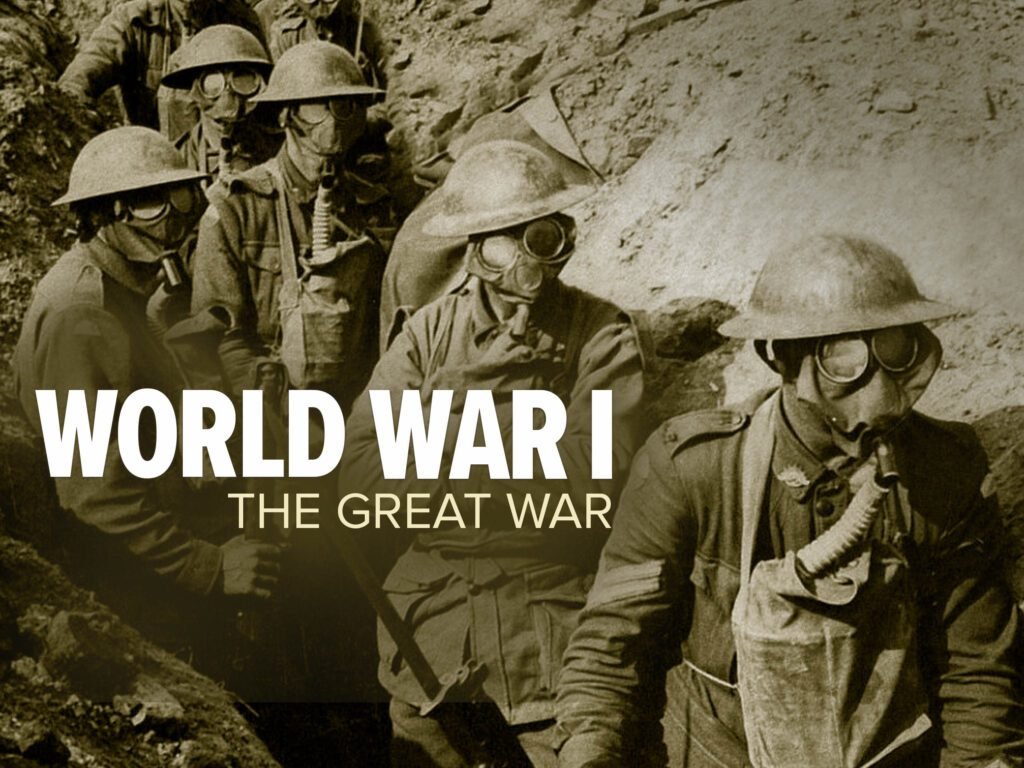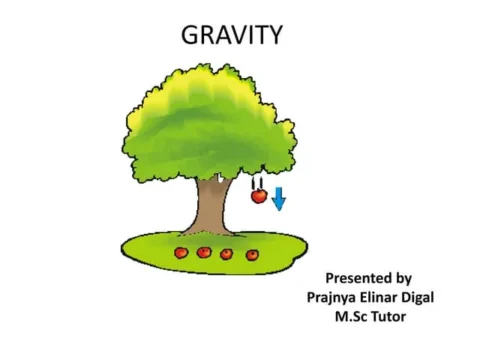World War I: A Comprehensive Study
1914-1918: The War That Changed the World
Causes of World War I
The MAIN Causes
Militarism: The arms race between major European powers intensified in the early 20th century. Naval rivalry between Britain and Germany was particularly acute following Germany's implementation of the Tirpitz Plan to expand their navy.
Alliances: Europe became divided into two hostile alliance systems:
- Triple Alliance (1882): Germany, Austria-Hungary, and Italy
- Triple Entente: Britain, France, and Russia
Imperialism: Competition for colonies and markets led to increased tensions, particularly in Africa during the "Scramble for Africa" and in Asia.
Nationalism: Growing nationalist movements threatened multi-ethnic empires like Austria-Hungary and Ottoman Empire. Serbian nationalism was particularly significant in triggering the war.
The Balkans Crisis
The Balkans had been destabilized by the decline of the Ottoman Empire, creating a power vacuum that Austria-Hungary and Russia competed to fill. The region experienced several crises:
- Bosnian Crisis (1908-09): Austria-Hungary annexed Bosnia and Herzegovina, angering Serbia and Russia
- Balkan Wars (1912-13): Further destabilized the region and increased Serbian power and ambition
The Spark: Assassination of Archduke Franz Ferdinand
On June 28, 1914, Archduke Franz Ferdinand, heir to the Austro-Hungarian throne, was assassinated in Sarajevo by Gavrilo Princip, a Bosnian Serb and member of the Black Hand, a Serbian nationalist organization.
The assassination set off a chain of events:
- Austria-Hungary issued an ultimatum to Serbia with deliberately harsh terms
- Serbia accepted most but not all terms
- Austria-Hungary declared war on Serbia (July 28, 1914)
- Russia began mobilizing in support of Serbia
- Germany declared war on Russia (August 1) and France (August 3)
- Germany invaded neutral Belgium to attack France
- Britain declared war on Germany (August 4)
"The lamps are going out all over Europe, we shall not see them lit again in our life-time."
World War I Timeline
1914
June 28: Assassination of Archduke Franz Ferdinand
July 28: Austria-Hungary declares war on Serbia
August 1-4: Germany declares war on Russia, France, and invades Belgium; Britain enters the war
August-September: Battle of Tannenberg; First Battle of the Marne halts German advance
November: Ottoman Empire enters the war on the side of Central Powers
December: First Christmas truce on the Western Front
1915
February: Germany begins unrestricted submarine warfare
April: Second Battle of Ypres; first large-scale use of poison gas
April-January 1916: Gallipoli Campaign fails for Allies
May: Italy enters war on Allied side
May 7: Sinking of the Lusitania
September: Bulgaria joins Central Powers
1916
February-December: Battle of Verdun causes enormous casualties
May 31-June 1: Battle of Jutland, the war's largest naval battle
July-November: Battle of the Somme; British suffer 60,000 casualties on first day
August: Romania enters war on Allied side
November: Franz Joseph, Emperor of Austria-Hungary, dies
1917
February: Germany resumes unrestricted submarine warfare
March: First Russian Revolution; Tsar Nicholas II abdicates
April 6: United States declares war on Germany
April-May: Nivelle Offensive fails; French Army mutinies
July-November: Third Battle of Ypres (Passchendaele)
November: Bolshevik Revolution in Russia; Communists take power
December: Armistice between Russia and Central Powers
1918
January: U.S. President Wilson issues Fourteen Points
March: Russia signs Treaty of Brest-Litovsk, exits war
March-July: German Spring Offensive makes initial gains but ultimately fails
August 8: "Black Day of the German Army" begins Allied Hundred Days Offensive
September-October: Bulgaria, Ottoman Empire, and Austria-Hungary sign armistices
November 9: Kaiser Wilhelm II abdicates
November 11: Germany signs armistice; fighting ends at 11 a.m.
1919
January-June: Paris Peace Conference
June 28: Treaty of Versailles signed
September: U.S. President Wilson suffers stroke during campaign for League of Nations
November: U.S. Senate rejects Treaty of Versailles and League of Nations
The Western Front
From Mobile to Static Warfare
The Western Front was established in August-September 1914 when the initial German advance through Belgium and into France was halted at the First Battle of the Marne. After the "Race to the Sea," a continuous line of trenches was established from the Swiss border to the North Sea.
The front became characterized by static trench warfare, with neither side able to achieve a decisive breakthrough for most of the war despite enormous casualties.
Trench Warfare
The trench system typically consisted of:
- Front line trenches: Where soldiers would prepare for attacks
- Support trenches: 75-100 meters behind the front line
- Reserve trenches: Several hundred meters further back
- Communication trenches: Connected the different trench lines
- No Man's Land: The deadly open area between opposing front line trenches
Life in the trenches was characterized by boredom interspersed with terror, poor sanitation, exposure to the elements, disease, and the constant threat of artillery bombardment or sniper fire.

Battle of the Somme (1916)
The Battle of the Somme was one of the largest and bloodiest battles of World War I. It was fought between July 1 and November 18, 1916, on both sides of the River Somme in France.
The British and French forces attempted to break through German defenses and draw German forces away from Verdun. The first day of the battle remains the bloodiest in British military history, with approximately 60,000 British casualties, including 19,240 dead.
British & Commonwealth
~420,000
French
~200,000
German
~500,000
Battle of Verdun (1916)
The longest battle of World War I, lasting from February 21 to December 18, 1916. German Chief of Staff Erich von Falkenhayn planned to "bleed France white" by attacking the symbolic fortress city of Verdun.
The battle became a war of attrition with both sides suffering enormous casualties. The French defense, organized by General Philippe Pétain and later Robert Nivelle, ultimately held.
French
~377,000
German
~337,000

The Final Offensives
German Spring Offensive (1918): Germany's last major attempt to win the war before American forces arrived in strength. Initial successes were followed by stalemate as German forces outran their supplies and faced fresh Allied troops.
Allied Hundred Days Offensive (Aug-Nov 1918): A series of successful Allied attacks that ultimately led to the defeat of German forces on the Western Front. Beginning with the Battle of Amiens on August 8, 1918 (called the "Black Day of the German Army" by General Ludendorff), the Allies advanced steadily, forcing Germany to seek an armistice.
The Eastern Front
Characteristics of the Eastern Front
Unlike the Western Front, the Eastern Front was characterized by greater mobility and maneuver due to:
- Vast geographic expanse covering thousands of kilometers
- Lower force-to-space ratio, making continuous trench lines impractical
- Less developed infrastructure and harsher weather conditions
The Eastern Front primarily involved Russia against Germany and Austria-Hungary, with the Ottoman Empire fighting Russia in the Caucasus region.

Battle of Tannenberg (1914)
Fought between August 26-30, 1914, this battle was a major German victory over Russia. The Russian Second Army under General Alexander Samsonov invaded East Prussia but was encircled and almost completely destroyed by German forces led by Paul von Hindenburg and Erich Ludendorff.
This battle established Hindenburg and Ludendorff as German national heroes and severely damaged Russian morale and military capabilities early in the war.
Russian
~170,000
German
~12,000
Brusilov Offensive (1916)
The Brusilov Offensive (June-September 1916) was Russia's greatest success of the war. Led by General Alexei Brusilov, Russian forces broke through Austro-Hungarian lines in Galicia and Bukovina. The offensive relieved pressure on other Allied fronts and severely weakened Austria-Hungary, but the Russians suffered heavy casualties and were unable to sustain their advance.
Russian Revolution and Exit from War
The strain of the war contributed significantly to the Russian Revolutions of 1917:
- February Revolution: Forced Tsar Nicholas II to abdicate; Provisional Government continued the war
- Bolshevik Revolution (October/November): Vladimir Lenin and the Bolsheviks seized power and sought peace
In December 1917, Russia signed an armistice with the Central Powers. The Treaty of Brest-Litovsk in March 1918 formally ended Russia's participation in the war, with harsh terms that included surrendering Poland, the Baltic states, Finland, and Ukraine.
The exit of Russia allowed Germany to transfer hundreds of thousands of troops to the Western Front for their 1918 Spring Offensive.
Key Figures of World War I

Woodrow Wilson
Country: United States
Role: U.S. President (1913-1921)
Led America into the war in 1917. Proposed the "Fourteen Points" as a basis for peace negotiations and championed the League of Nations. His vision for a peaceful postwar order was ultimately undermined by Allied demands and U.S. Senate rejection.

Kaiser Wilhelm II
Country: Germany
Role: Emperor of Germany
Grandson of Queen Victoria whose aggressive foreign policy contributed to tensions before the war. Increasingly sidelined by military leaders during the conflict. Abdicated on November 9, 1918, and fled to the Netherlands.

Ferdinand Foch
Country: France
Role: Supreme Allied Commander
Appointed Supreme Commander of Allied Forces in 1918. Coordinated the final Allied offensive that led to German defeat. Famously said of the Treaty of Versailles: "This is not peace. It is an armistice for twenty years."

Tsar Nicholas II
Country: Russia
Role: Emperor of Russia
Last Russian Tsar whose decision to take personal command of the Russian Army in 1915 tied him directly to military failures. Forced to abdicate in March 1917 and later executed with his family by the Bolsheviks in July 1918.

David Lloyd George
Country: Great Britain
Role: Prime Minister (1916-1922)
Became British Prime Minister during the war's darkest period. Energized the British war effort and played a key role in the Paris Peace Conference, taking a middle position between Wilson's idealism and Clemenceau's desire for harsh treatment of Germany.

Georges Clemenceau
Country: France
Role: Prime Minister (1917-1920)
Known as "The Tiger" for his determination. Became French Prime Minister in 1917 and led France through the final year of the war. At the Paris Peace Conference, he insisted on harsh terms for Germany to ensure French security.
Technology and Warfare
The First Modern War
World War I saw the first large-scale use of many new technologies, creating unprecedented destructive power and transforming how war was waged.
Machine Guns
Machine guns like the British Vickers and German Maschinengewehr 08 could fire 400-600 rounds per minute. They were devastating defensive weapons that made frontal infantry assaults extremely costly and contributed significantly to the stalemate on the Western Front.
Artillery
Artillery caused the majority of casualties in the war. Heavy guns could fire shells weighing hundreds of pounds over distances of several miles. Creeping barrages developed as a tactic to provide covering fire for advancing infantry.
By 1918, artillery techniques had become highly sophisticated, with fire control based on accurate maps, meteorological data, and flash-spotting.
Chemical Weapons
First used at the Second Battle of Ypres in 1915 when Germany released chlorine gas. Later developments included phosgene and mustard gas. By the war's end, all major powers were using chemical weapons. Gas masks and protective clothing were developed in response.
While chemical weapons caused relatively few deaths compared to conventional weapons, they created terror and remained a powerful psychological weapon.
Aircraft
Evolved rapidly from reconnaissance platforms to fighters and bombers. Famous fighter aircraft included the German Fokker Dr.I (flown by the "Red Baron"), the British Sopwith Camel, and the French SPAD XIII.
Strategic bombing of cities began, prefiguring the aerial warfare of World War II.
Tanks
First deployed by the British at the Battle of the Somme in 1916. Early tanks were slow, unreliable, and vulnerable, but by 1918 they had become more effective. The British Mark IV and V and the French Renault FT were among the most successful designs.
Tanks helped break the trench warfare stalemate during the final Allied offensives.
Submarines
Germany's U-boats nearly succeeded in cutting Britain's maritime supply lines. Unrestricted submarine warfare, which targeted merchant and passenger ships without warning, contributed to bringing the United States into the war after the sinking of the Lusitania in 1915.
Medical Innovations
The massive casualties of the war drove medical advances:
- Blood transfusion techniques were improved and blood banks established
- X-ray machines became portable and were used near the front lines
- Plastic surgery techniques developed to treat facial injuries
- Triage systems were refined for treating mass casualties
- Prosthetic limbs improved to help the many amputees
Communications
The complexity of modern warfare required improved communications:
- Field telephones connected front lines with headquarters when wires weren't cut by shellfire
- Wireless radio became increasingly important, especially for naval and air operations
- Carrier pigeons remained surprisingly effective when electrical communications failed
- Signal lamps, flags, and flares were used for immediate tactical communications
The Treaty of Versailles
The Paris Peace Conference
The Paris Peace Conference opened on January 18, 1919, with delegates from 27 nations. However, the key decisions were made by the "Big Four":
- Woodrow Wilson (United States) - Advocated for his Fourteen Points and the League of Nations
- David Lloyd George (Great Britain) - Sought a moderate settlement while satisfying British public demands for German punishment
- Georges Clemenceau (France) - Demanded harsh terms to ensure French security against future German aggression
- Vittorio Orlando (Italy) - Focused on securing territorial gains promised to Italy
Germany and other defeated powers were excluded from the negotiations.
Key Terms of the Treaty
The Treaty of Versailles was signed on June 28, 1919, exactly five years after the assassination of Archduke Franz Ferdinand. Its major provisions included:
1. War Guilt Clause (Article 231): Germany accepted responsibility for causing the war
2. Reparations: Germany was forced to pay 132 billion gold marks (later reduced) to the Allies
3. Territorial Changes:
- Alsace-Lorraine returned to France
- Parts of Prussia given to the newly reconstituted Poland
- German colonies became League of Nations mandates
- Saar coalfields placed under League of Nations control for 15 years
- Rhineland demilitarized
4. Military Restrictions:
- German army limited to 100,000 men
- Conscription prohibited
- No tanks, military aircraft, or submarines allowed
- Navy reduced to six battleships and smaller vessels
- General Staff abolished
5. League of Nations: Established as Wilson's "Fourteen Points" envisioned, but the U.S. never joined due to Senate rejection
Reaction and Legacy
The treaty was widely criticized:
- In Germany: Seen as a "diktat" (dictated peace) and a national humiliation. Economic terms were viewed as crushing and punitive
- In Allied Countries: Many felt it was either too harsh (like economist John Maynard Keynes who predicted economic disaster) or too lenient (like Marshal Foch who predicted another war in 20 years)
- In the United States: Senate rejected the treaty, largely due to opposition to the League of Nations
The harsh terms, economic burden, and "war guilt" clause fueled German resentment and nationalism, creating conditions that Adolf Hitler would later exploit in his rise to power.
"This is not a peace. It is an armistice for twenty years."
Legacy and Impact
Human Cost
World War I was one of the deadliest conflicts in human history:
- Military Deaths: Approximately 9-10 million
- Military Wounded: About 21 million
- Civilian Deaths: 5-6 million from direct war effects, famine, and disease
- The Spanish Flu Pandemic: Spread partly due to war conditions, killed 50-100 million worldwide
An entire generation of young men was decimated, particularly in Europe. In Britain, France, and Germany, around 80% of men born between 1875 and 1899 were mobilized.
Political Transformation
The war redrew the map of Europe and the Middle East:
- Four Empires Collapsed: German, Austro-Hungarian, Ottoman, and Russian
- New Nation-States: Poland, Czechoslovakia, Yugoslavia, Finland, Estonia, Latvia, Lithuania, and others emerged
- Middle East Redrawn: Former Ottoman territories became British and French mandates, laying foundations for modern Middle Eastern states and conflicts
- Russian Revolution: Led to the world's first communist state, fundamentally altering global politics for the rest of the 20th century
- United States: Emerged as a global power, though initially returned to isolationism
Social Change
The war accelerated social transformations:
- Women's Roles: Women entered the workforce in unprecedented numbers, contributing to women's suffrage movements
- Class Structures: Traditional aristocratic authority declined
- Labor Movements: Strengthened as workers demanded better conditions and recognition for war contributions
- Colonial Relationships: Colonial subjects who fought for European powers began questioning colonial rule
Cultural Impact
The war's unprecedented horror and disillusionment influenced all forms of cultural expression:
- Literature: Writers like Wilfred Owen, Siegfried Sassoon, Erich Maria Remarque, and Ernest Hemingway created works reflecting the war's brutality and futility
- Art: The Dada movement emerged as a reaction against the rationality that had led to the war; expressionism and surrealism reflected psychological trauma
- Memorialization: War memorials, tomb of the unknown soldier, and remembrance traditions like Armistice/Remembrance Day (November 11)
Path to World War II
World War I created conditions that led directly to World War II:
- Treaty of Versailles: Created resentment in Germany that Hitler exploited
- Economic Issues: War debts, reparations, and economic disruption contributed to the Great Depression
- Failure of Collective Security: The League of Nations proved ineffective at preventing aggression
- Militarism: Despite the war's horrors, glorification of military power continued
Many historians now view the two world wars as a single "Thirty Years' War" of the 20th century (1914-1945).
"The war to end all wars" became instead the precursor to an even more devastating global conflict.



